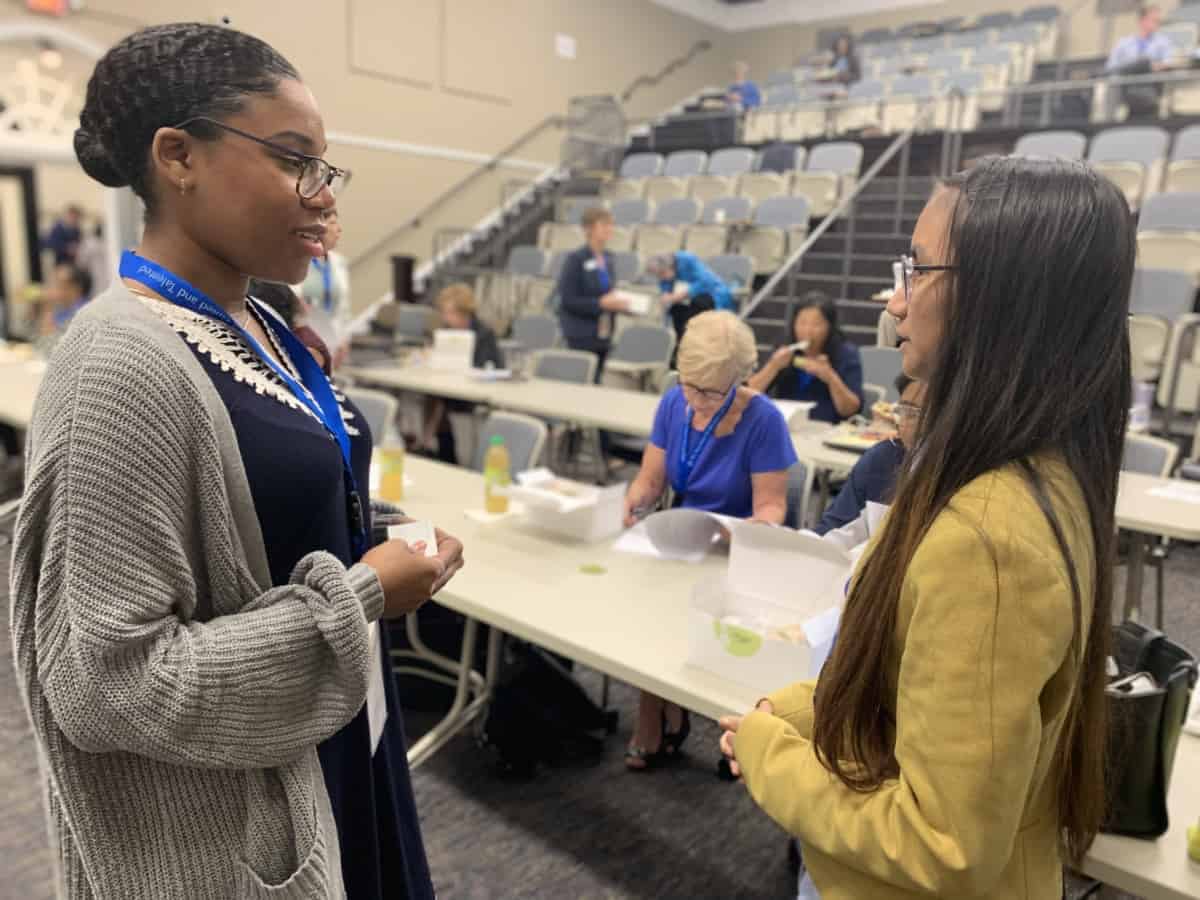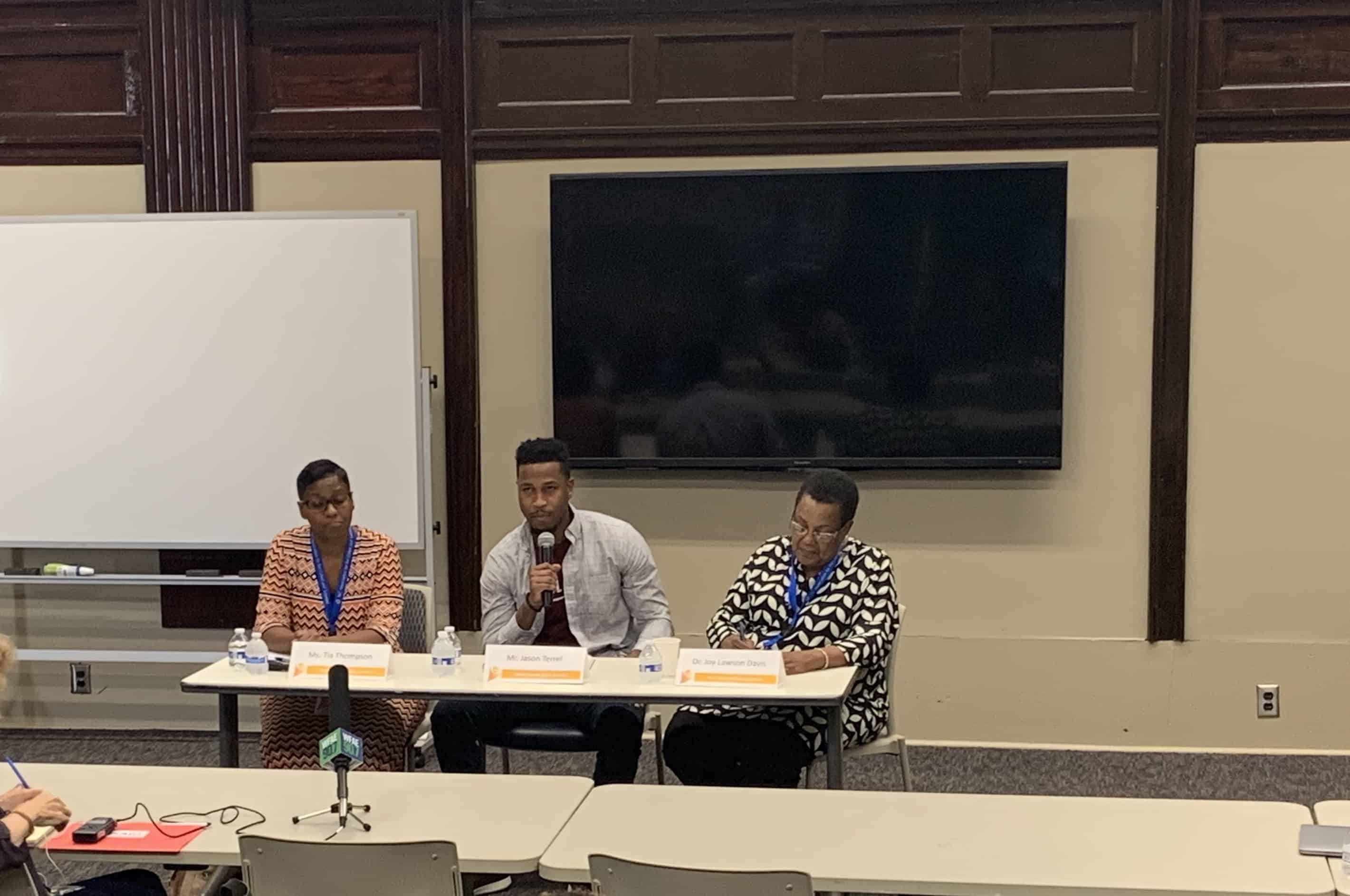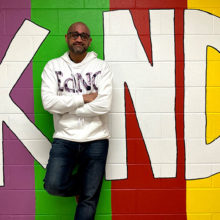
As an academically or intellectually gifted (AIG) teacher in Guilford County Schools, Tia Thompson comes across a lot of special students. She remembers one particularly fondly. He confided in her that he couldn’t be himself in his classroom because he felt so far ahead of his peers.
His teacher was busy tending to students who were struggling, so this gifted child received little of his teacher’s time. Not only that, but the student — an African American — spent much of his day helping his teacher, fielding questions from his peers and helping them learn concepts.
The isolation was real.
“I’m the only kid in my class,” Thompson recalls him saying. “I don’t have anybody to talk to. My teachers are busy with everybody else, and it’s a lonely place for me.”
The likelihood that state schools will label white or Asian students as gifted is eight times higher than for black students, and more than five times higher than for Hispanic students. The likelihood that a child who lives in poverty will be labeled gifted is even lower. And when these students are shut out of programs aimed at developing their special talents, they often lose interest in school.
During a conference Saturday called Talent Delayed/Talent Denied II at Duke, stakeholders and advocates met to hear these data, discuss how pervasive the problem has become — in North Carolina and nationwide — and brainstorm solutions. The conference was hosted by the North Carolina Association for the Gifted and Talented.
Thompson spoke passionately during her panel. She recalled how she could not be with that gifted child full-time because of funding, so she saw him twice a week and he spent the rest of his time in general education.
“I talked to his teacher, and his teacher said, ‘Pull him out,’” Thompson said. “She said, ‘Because I do feel that I’m not giving him what he needs.’ She said, ‘I can’t.’ She said, ‘I have all these other students in my classroom who pull at me who I’m told that I have to serve…’
“And so it is hard because I know as a classroom teacher myself that I’ve had that battle. If the AIG teacher wasn’t there that week, or she had to be in meetings or something, my AIG students didn’t get my time, because my time was dedicated to my students who are below grade level.”
Panelists spoke about the importance of teachers as talent scouts, and how the Department of Public Instruction is trying to bring about change — starting with a six-pronged call to action introduced at the State Board of Education meeting Wednesday, discussed further below.
“We know there are far too many children in North Carolina schools who are black, brown, language learners, or impoverished who come to school not just ready to learn but yearning to learn, capable of going further than their classmates,” conference organizer Shelagh Gallagher said. “But because of a multitude of circumstances they are undereducated, overlooked, and underrepresented in gifted programs.”
Keynote speaker Joy Lawson Davis added: “The reason we’re here is because so many people just absolutely don’t believe that giftedness can exist outside the community where there’s a lot of money and outside the community where the dominant population exists.”

Empowering teachers to be talent scouts
It starts with teaching teachers to identify talent, several experts said Saturday. They called it empowering teachers to be “talent scouts” rather than “deficiency detectives.”
“We should make sure that we’re giving them the best curriculum that we can give to them,” Thompson said. “Because I know there are teachers that … I get to work with, they feel that sometimes they’re not able to give the students the best curriculum, because they’re told that they have to reach those students that are below grade level. And that’s the expectation. And so they feel that for their gifted students they just kind of have to leave them to fend for themselves.”
Helping all teachers identify and reach gifted children, Thompson said, ensures that every child is challenged regardless of whether they’re with the AIG teacher or not. All students should be challenged in every classroom, Thompson said.
In Guilford, Jones Elementary Principal Ron Luciano offered AIG teacher training to every teacher at his school over two weekends. The house was full.
“I’m telling you, those teachers were so passionate,” Thompson said. “They said they want to give this information but we don’t know how. They were able to see some tremendous growth with their [end of grade] scores. Every single teacher in that building – the art teacher, the music teacher, everybody came. And it was amazing.”
More educators of color
North Carolina also must bridge the gap between white and black educators because relationships and role modeling are crucial to giving students the courage to display their talents, speakers said.
Jason Terrell, executive director of a Charlotte organization called Profound Gentlemen, works to put male teachers of color in classrooms. He points to several studies that show black students are more likely to perform better in school if they have black teachers.
“I was considered academically gifted, but I was afraid to take my book bag to class,” said Terrell, who is African American. “Initially I was placed out of those programs; my mom had to really come advocate for me. But I never really had a teacher who had my back. I didn’t really get along with my teachers, and I was kind of a behavior problem because of that.”
Terrell said he and the teachers he places in classrooms know what it’s like to be a black male in schools — and tend to have higher expectations for their black students than white teachers do.
“I set my expectations for my students extremely high,” he said.
Finding teachers who are from their school communities
Experts at the conference agree that teachers who have a better understanding of the community, and the culture of communities, have a greater chance of identifying talent simply through “respectful understandings of the norms and the traditions within the culture,” Davis said.
Davis says school districts can make this happen by calling on leaders and longtime residents of their communities. Those people understand the culture across generations, and they have a better understanding of the community.
“The people who come from the culture of the target groups that you are seeking to identify, those individuals who have the information about who they really are, are the individuals in the community,” said Davis, who is chair of Virginia Union’s Department of Teacher Education. “It just makes more sense. So the cultural agents in that community have to be brought into conversations with teachers so that teachers can learn more about why students have certain behaviors.”
For example, in some cultures, children are taught that it is disrespectful to look an authority figure in the eye. In other cultures, failure to do so is disrespectful.
“We really have to know how do these kinds of behaviors manifest themselves in other cultures, so we can get to know the students who we are attempting to serve,” Davis said.
Department of Public Instruction’s call to action
Sneha Shah-Coltrane, director of gifted and talented at DPI, created a six-part call to action and its potential outcomes. At Wednesday’s State Board of Education meeting, she spoke about North Carolina’s leadership in gifted and talented education and how the state is often cited in nationwide data. She also presented the call to action:
Reframe teachers’ lenses. By talking about and reflecting on biases and how teachers see students, schools can smash false stories — and have a better chance of offering every student equitable opportunities.
Use equitable identification practices. Schools should give students every chance to display their strengths and talents. Schools would be encouraged to use universal screening and referral practices, and to view performance in local programs in the context of local norms. “It’s about having students have the opportunities at multiple times…to show us their best,” Shah-Coltrane said.
Provide a range of services within programs. Schools should focus on matching the educational environment with each student’s educational needs — adjusting services to meet the student, rather than expecting the student to change to meet the service. “We have to have a range of services that adapt to the student’s needs,” Shah-Coltrane said.
Foster talent development. By creating environments where teachers can see student strengths and recognize their potential, schools will give students a better chance to grow, independent of their background or economic means.
Collect and use meaningful data. Using program vision and goals to determine relevant data, schools can assess program success and make improvements. This will allow teachers and schools to determine whether the right interventions are being made, in the right way and at the right time.
Provide focused professional learning opportunities. These will allow schools to remove systemic barriers, improve student services, share ownership and move closer to equity and excellence in gifted education.
“What they need to do is clear,” Shah-Coltrane said in closing. “It is clear these are the six actions they need to do.”
Added state board member James Ford, “It’s a really bright day for North Carolina students.”


